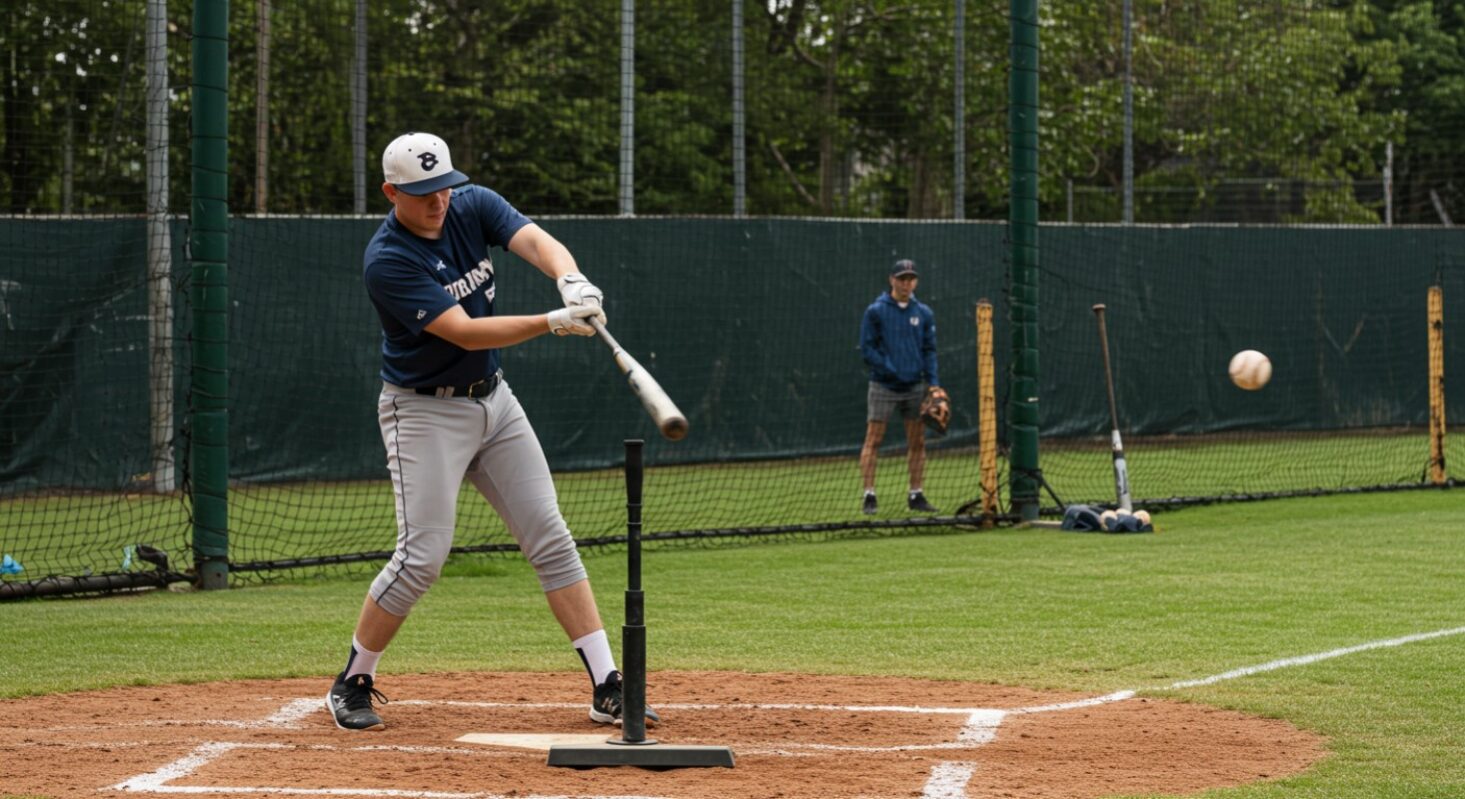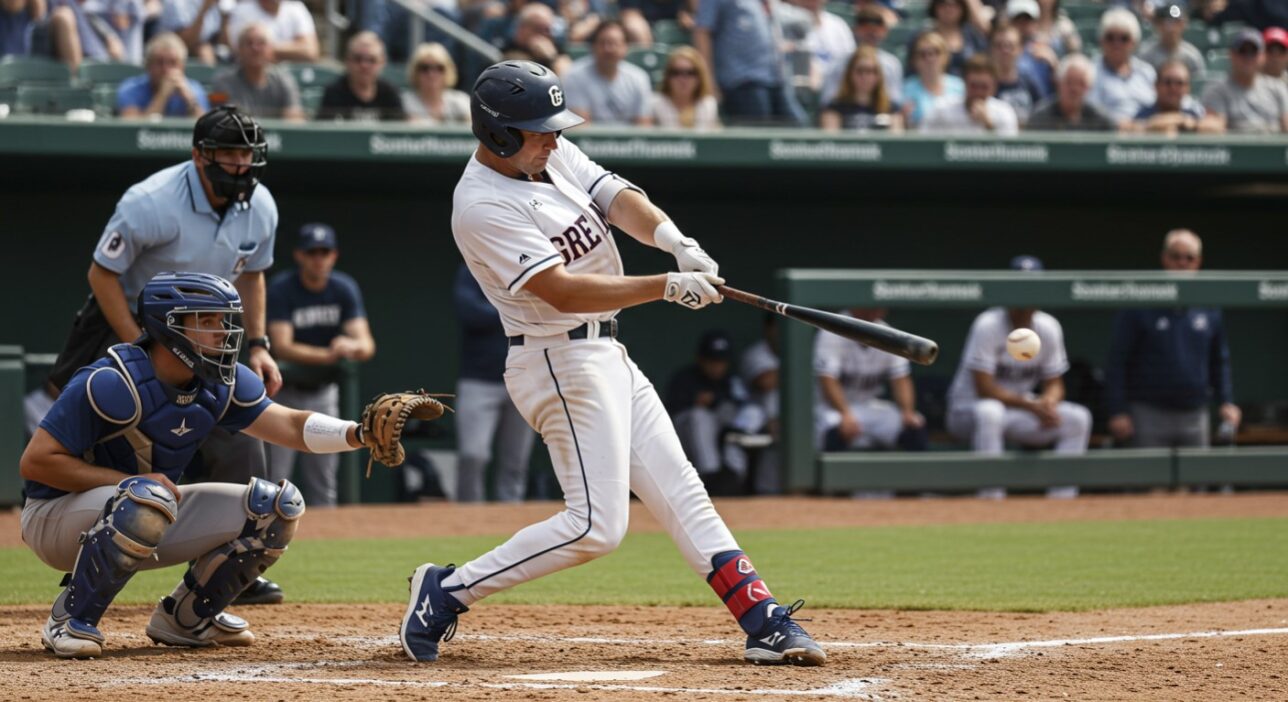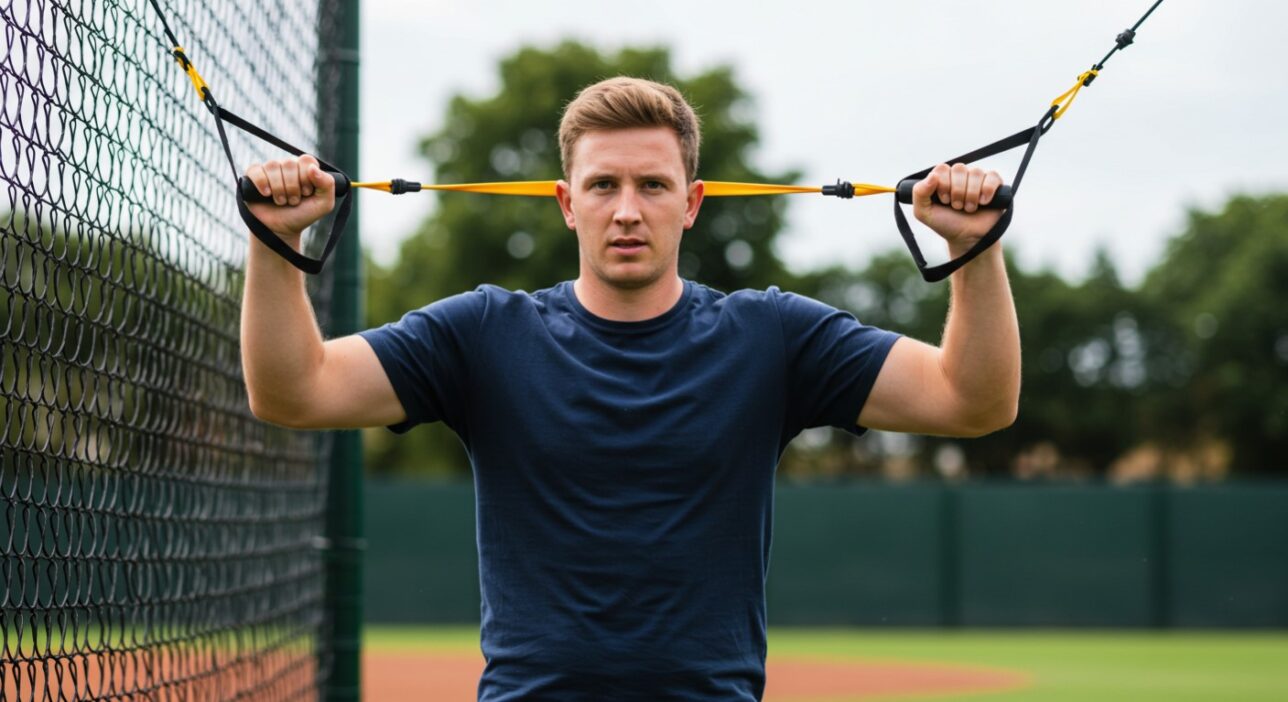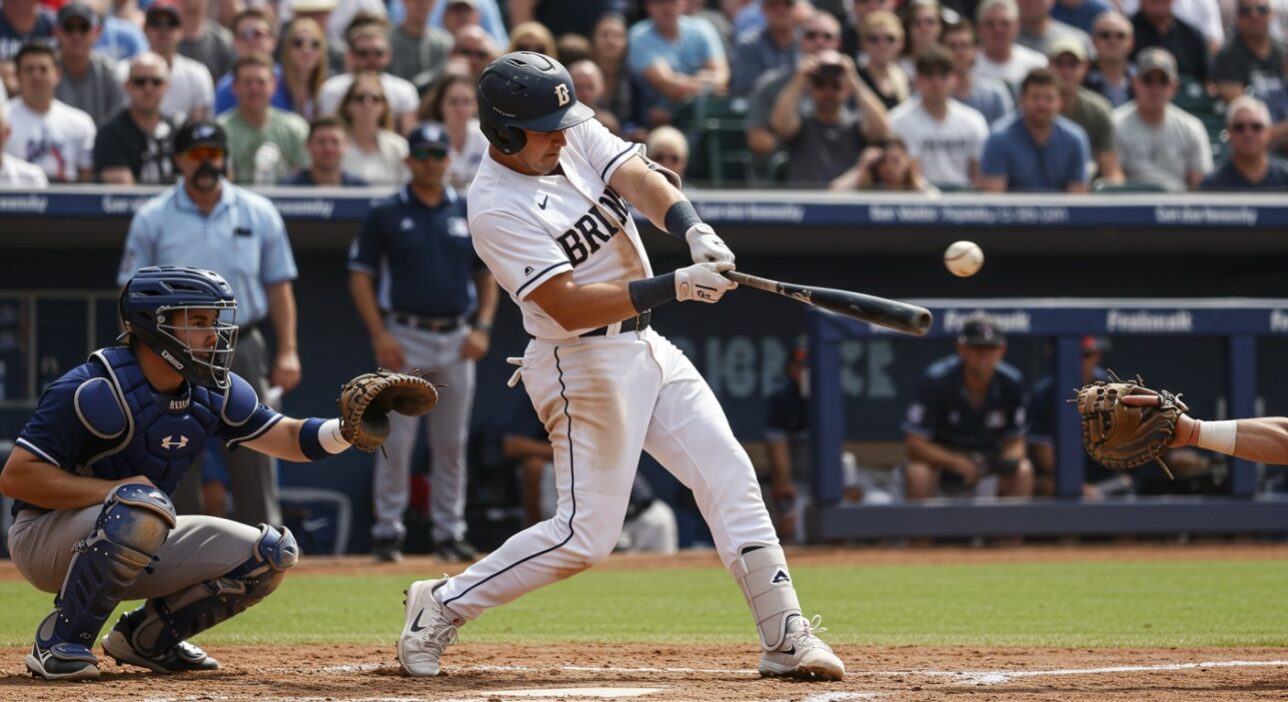
How to Improve Hand-Eye Coordination for Baseball Hitting?
Baseball is often described as a battle between pitcher and hitter, and nowhere is this more apparent than when a batter faces a fastball travelling at 90 miles per hour or more. The batter has less than half a second to identify the pitch, decide whether to swing, and then bring the bat through the strike zone with precision. Power and mechanics play their part, but without sharp hand-eye coordination, even the strongest player will struggle to make consistent contact.
Hand-eye coordination for baseball hitting is the ability to synchronise what the eyes see with what the body does. In baseball, this means picking up the flight of the ball, predicting where it will arrive, and delivering the bat to meet it at exactly the right moment. It is the hidden skill behind every line drive, home run, or well-placed single.
This article explains what hand-eye coordination in baseball really involves, why it is especially important compared to other sports, and how players at every level can train their eyes and bodies to work in harmony. From simple drills in the backyard to professional training methods, improving coordination is the foundation of hitting success.
What is Hand-Eye Coordination in Baseball?

In its simplest form, hand-eye coordination is the brain’s ability to take visual information and convert it into precise motor action. When a pitcher releases the ball, the hitter’s eyes lock onto it. The brain processes the spin, speed, and direction in fractions of a second, and then sends signals through the nervous system to activate the muscles that control the swing.
The process is remarkably complex. The eyes track the ball’s trajectory, depth perception estimates distance and speed, and reaction time governs how quickly the body can respond. Meanwhile, the hitter must maintain balance, keep the bat on the correct path, and commit to the swing at the exact right moment. All of this happens faster than conscious thought, relying instead on trained reflexes and coordination.
In baseball terms, hand-eye coordination makes the difference between a foul tip and a clean double into the gap. It governs plate discipline too. A hitter with strong coordination can identify pitches outside the strike zone and resist chasing, while still being able to adjust late to a slider or changeup that moves unexpectedly.
Why It Matters More in Baseball Than Other Sports
Almost every sport requires coordination, but baseball is unique in the speed and precision demanded. A tennis player, for example, has more time to react to a serve travelling at 120 mph because of the shorter racket length and the bounce of the ball. In cricket, bowlers may hit speeds similar to baseball pitchers, but the larger bat surface and different pitch conditions change the reaction demands.
Baseball gives hitters the narrowest reaction window. A four-seam fastball at 95 mph takes about 0.4 seconds to reach home plate. In that time, the batter must recognise the pitch, decide whether to swing, and complete a mechanically sound movement. Add in the variety of pitches — curveballs, sliders, changeups — and the challenge becomes even greater.
This is why elite hitters are often distinguished less by raw strength and more by exceptional hand-eye coordination. They appear to have extra time, making hitting look effortless. In reality, their brain and body are processing information faster and more efficiently, allowing them to adapt to different pitches while maintaining control of the bat.
Components of Hand-Eye Coordination for Hitters

Breaking down hand-eye coordination into its elements makes it easier to understand and train. Key components include:
-
Visual tracking – The ability to pick up the ball early from the pitcher’s hand and follow its path all the way to the plate.
-
Depth perception – Judging how far away the ball is, how fast it is closing the distance, and how it will break.
-
Reaction time – The speed at which the brain converts visual cues into physical action.
-
Motor control – The fine-tuned ability to control bat path, swing plane, and follow-through.
-
Focus and concentration – The mental skill of tuning out distractions, crowds, and pressure situations.
Each of these elements can be trained separately, but together they create the seamless reaction that fans see when a hitter times a pitch perfectly.
Drills to Improve Hand-Eye Coordination
Practical drills are the most direct way to sharpen hand-eye coordination. Players from Little League to the Major Leagues use variations of the following exercises:
-
Small ball drills – Hitting tennis balls, golf whiffle balls, or even beans with a bat forces sharper focus because the target is smaller.
-
Coloured ball drills – Using balls marked with different colours or numbers, and requiring the hitter to call them out before swinging, sharpens visual tracking.
-
Reaction ball bounces – A rubber ball with uneven surfaces bounces unpredictably, helping players improve reflexes when fielding or preparing to hit.
-
Soft toss with variable spins – Tossing balls underhand with deliberate spin mimics off-speed pitches and forces hitters to adjust their timing.
-
One-handed bat drills – Practising swings with only the lead or back hand builds control and strengthens coordination.
-
Tracking pitches without swinging – Standing in the batter’s box and following the ball with the eyes trains discipline and pitch recognition.
-
Video games and VR training – Modern tools simulate pitch tracking and decision-making without physical wear and tear.
The key to these drills is variety. Hitting only fastballs in batting practice may help mechanics, but it does not develop the flexibility needed to adjust in real games.
Quick Reference: Hand-Eye Coordination Drills for Hitters
| Drill / Exercise | Purpose | Difficulty Level | Notes & Variations |
|---|---|---|---|
| Small Ball Hitting (tennis/golf whiffle balls) | Sharpens focus, improves precision | Easy–Medium | Can progress to smaller targets over time |
| Coloured Ball Drill | Trains visual tracking and focus | Medium | Call out colour/number before swinging |
| Reaction Ball Bounces | Improves reflexes and unpredictability | Easy | Great warm-up for fielding as well |
| Soft Toss with Spin | Teaches timing adjustments vs off-speed | Medium–Hard | Add topspin/backspin for variation |
| One-Handed Bat Drills | Strengthens bat control and coordination | Medium | Use both lead and back hand in sets |
| Tracking Without Swinging | Builds plate discipline and recognition | Easy | Focus only on watching release/spin |
| VR / Video Training | Simulates live pitching for recognition | Advanced | Useful for pro and college hitters |
Off-Field Exercises & Training Aids

Hand-eye coordination can also be trained away from the diamond. Many athletes incorporate cross-training and unconventional tools to keep their reflexes sharp.
Juggling, for example, is a classic drill for developing visual tracking and timing. Agility ladder exercises improve footwork and ensure that balance and lower-body coordination match the upper-body swing. Balance drills, such as standing on one leg while tossing and catching, strengthen stabiliser muscles essential for batting posture.
Technology also plays a role. Vision training goggles that simulate strobe effects challenge players to focus under difficult conditions. Apps and programmes designed for eye training can measure reaction time and track improvements over weeks of practice.
Mental & Cognitive Training
Hand-eye coordination is not just physical. Mental sharpness under pressure often separates good hitters from great ones. Mindfulness practices, such as controlled breathing and meditation, improve focus during long games or high-stakes at-bats.
Visualisation is another powerful tool. Hitters often imagine facing a particular pitcher, seeing the ball out of the hand, and executing a successful swing. This mental rehearsal primes the brain to react more quickly in reality.
Many professionals develop pre-at-bat routines to lock in concentration. Whether it is adjusting gloves, tapping the plate, or a specific breathing pattern, these habits calm nerves and sharpen focus.
How Professionals Build Hand-Eye Coordination
At the highest levels, players use advanced methods to refine their coordination. MLB hitters often train with virtual reality systems that replicate opposing pitchers’ release points and spin patterns. Video scouting allows them to study tendencies before stepping into the box.
Legends of the game have credited unusual methods too. Some practised hitting bottle caps or kernels of corn tossed in the air. Others relied on consistent routines of soft toss and tracking drills before games.
Pre-game routines often emphasise simply watching pitches without swinging, reminding hitters to trust their eyes before unleashing their power.
Common Mistakes in Training
Many young players focus almost exclusively on strength and swing mechanics, neglecting the role of vision and coordination. Without training the eyes, all the strength in the world will not translate into consistent contact.
Another mistake is ignoring rest. Hand-eye coordination requires a fresh, alert mind. Overtraining without recovery can dull reflexes and reduce concentration. Finally, some players rely too heavily on one type of drill, missing out on the variety that builds adaptability.
Conclusion: Hand-Eye Coordination for Baseball Hitting

Hand-eye coordination is the foundation of baseball hitting. It is what allows a batter to recognise pitches, react in time, and square up the ball with precision. While mechanics, strength, and confidence matter, none of them function without the connection between eye and hand.
Improvement comes from a mix of drills, off-field training, and mental preparation. From juggling to VR, from small ball games to mindfulness, the options are vast. Consistency, however, is the true secret. Train regularly, rest properly, and focus on progress rather than perfection.
For players of all ages, the message is clear: sharpen your eyes, and the bat will follow.





